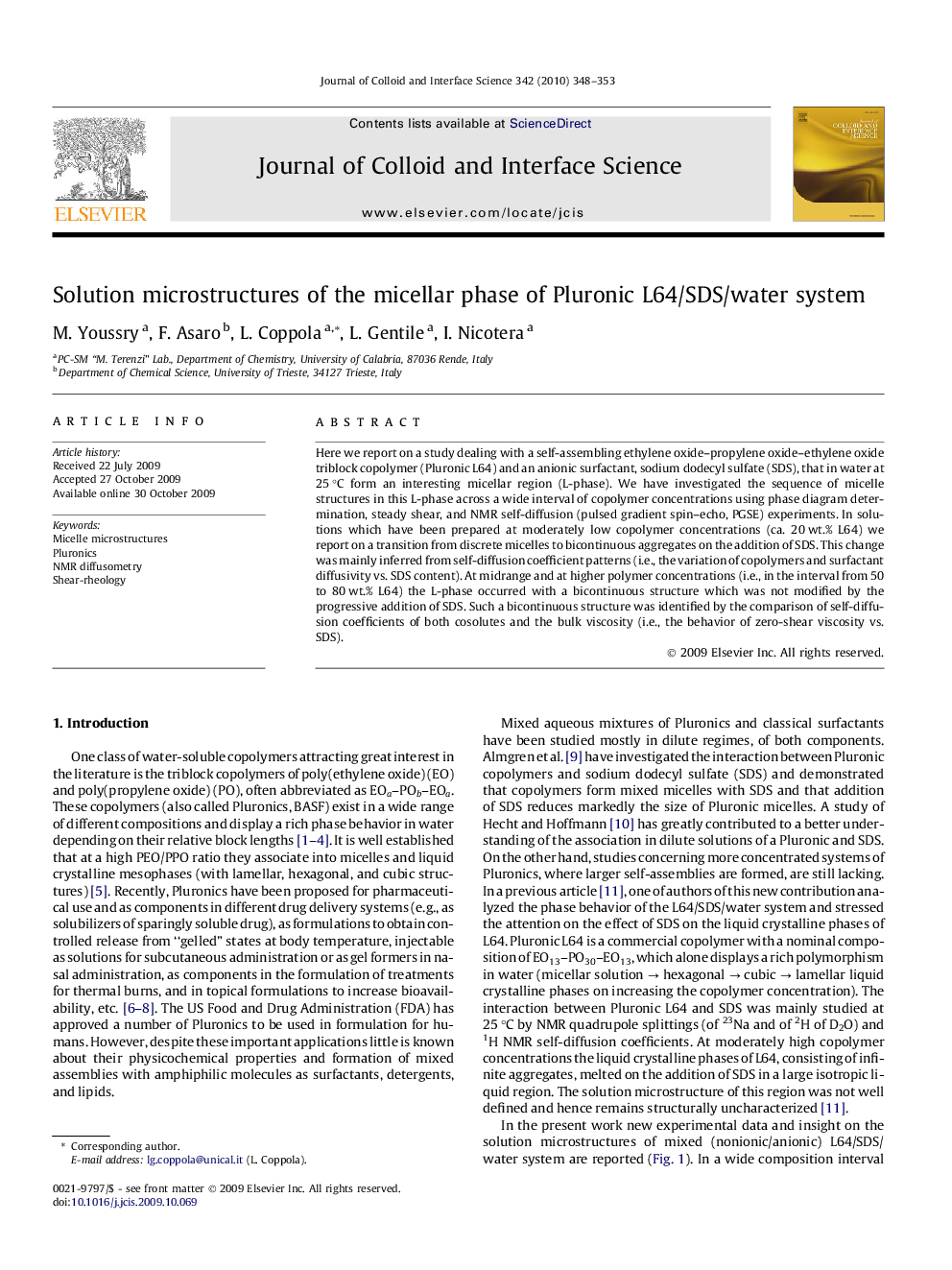| Article ID | Journal | Published Year | Pages | File Type |
|---|---|---|---|---|
| 609530 | Journal of Colloid and Interface Science | 2010 | 6 Pages |
Here we report on a study dealing with a self-assembling ethylene oxide–propylene oxide–ethylene oxide triblock copolymer (Pluronic L64) and an anionic surfactant, sodium dodecyl sulfate (SDS), that in water at 25 °C form an interesting micellar region (L-phase). We have investigated the sequence of micelle structures in this L-phase across a wide interval of copolymer concentrations using phase diagram determination, steady shear, and NMR self-diffusion (pulsed gradient spin–echo, PGSE) experiments. In solutions which have been prepared at moderately low copolymer concentrations (ca. 20 wt.% L64) we report on a transition from discrete micelles to bicontinuous aggregates on the addition of SDS. This change was mainly inferred from self-diffusion coefficient patterns (i.e., the variation of copolymers and surfactant diffusivity vs. SDS content). At midrange and at higher polymer concentrations (i.e., in the interval from 50 to 80 wt.% L64) the L-phase occurred with a bicontinuous structure which was not modified by the progressive addition of SDS. Such a bicontinuous structure was identified by the comparison of self-diffusion coefficients of both cosolutes and the bulk viscosity (i.e., the behavior of zero-shear viscosity vs. SDS).
Graphical abstractSelf-diffusion coefficients of copolymer, SDS, and water plotted in order to probe a discrete-to-bicontinuous solution transition (the arrow).Figure optionsDownload full-size imageDownload high-quality image (72 K)Download as PowerPoint slide
